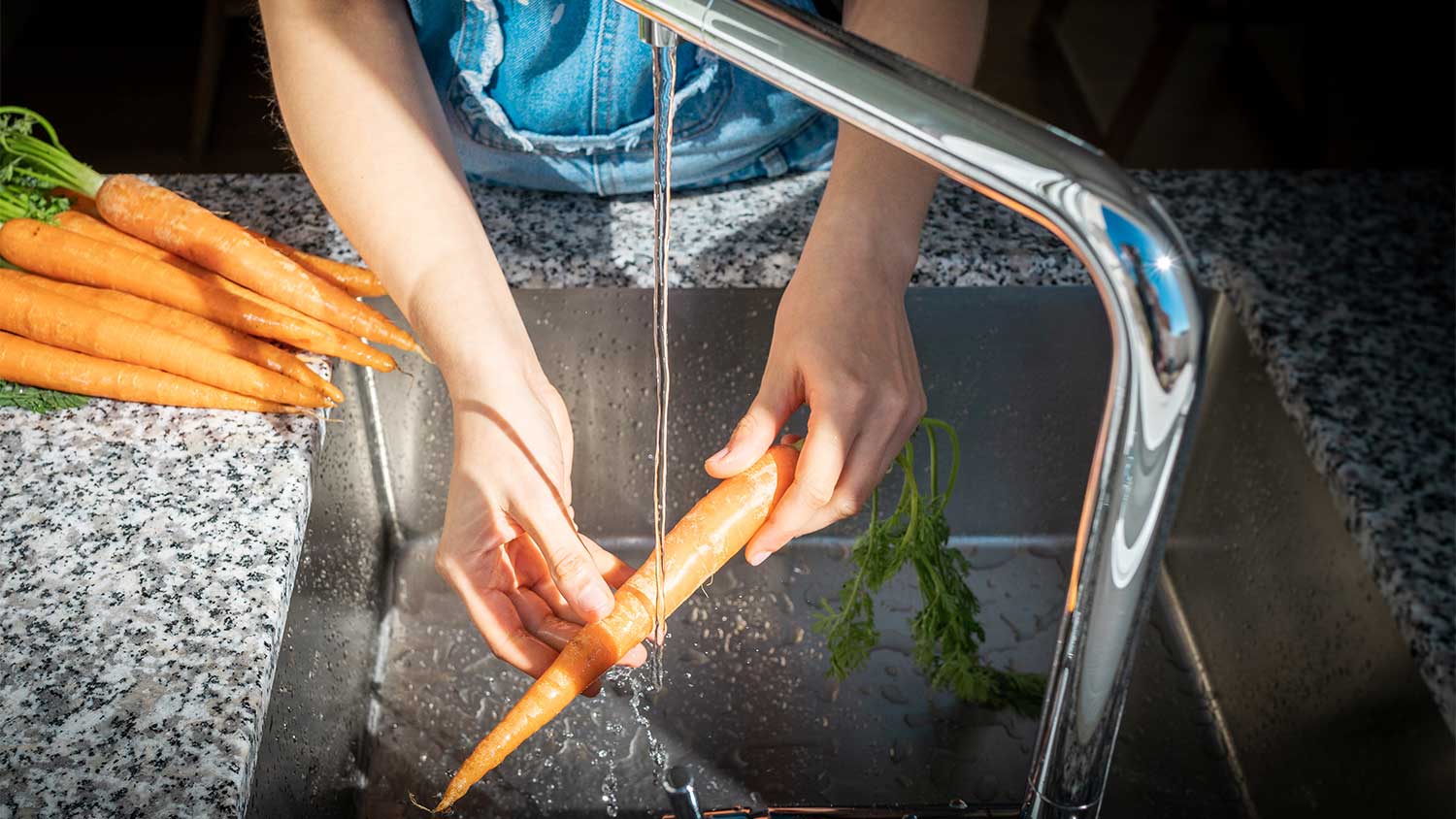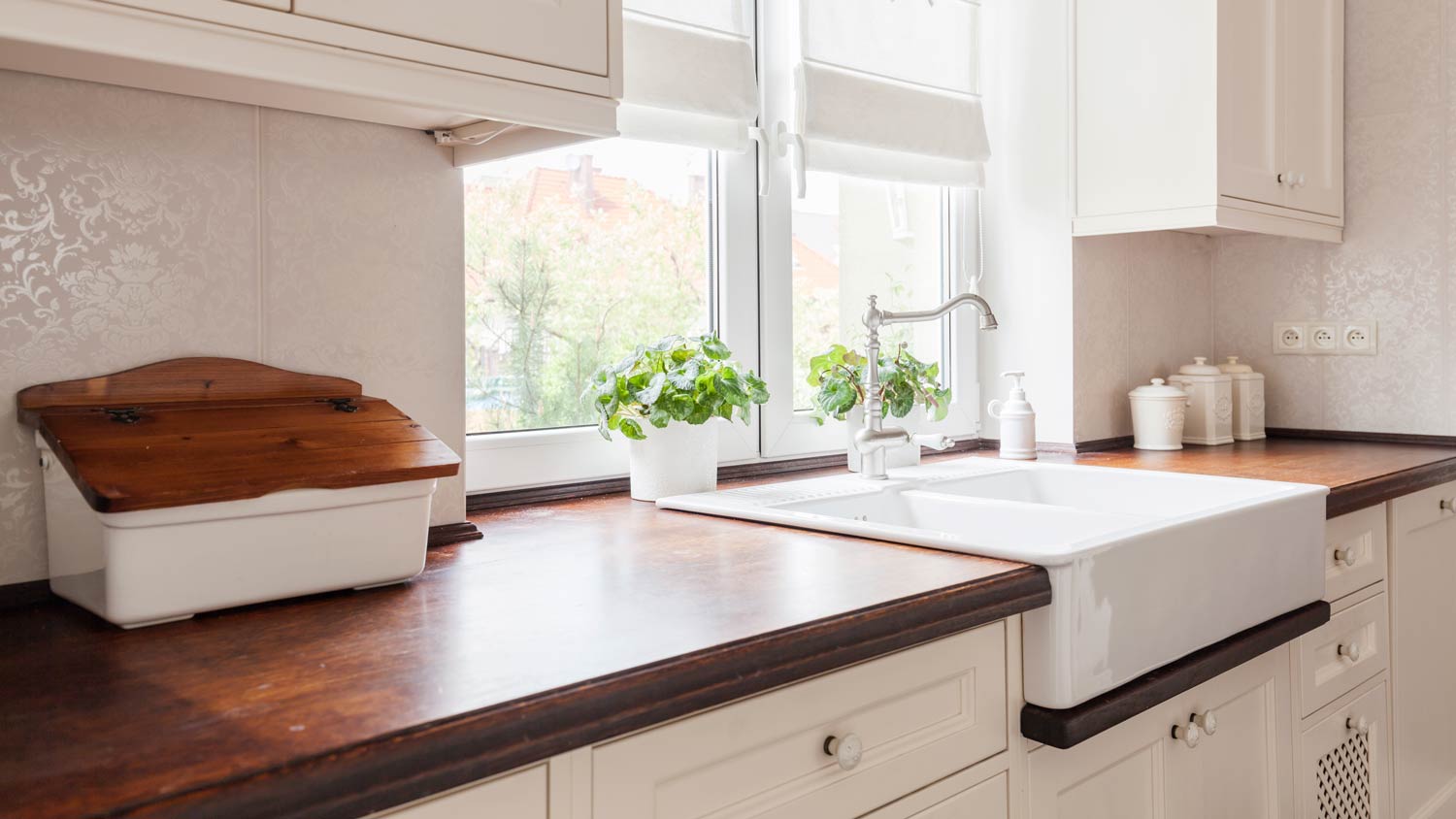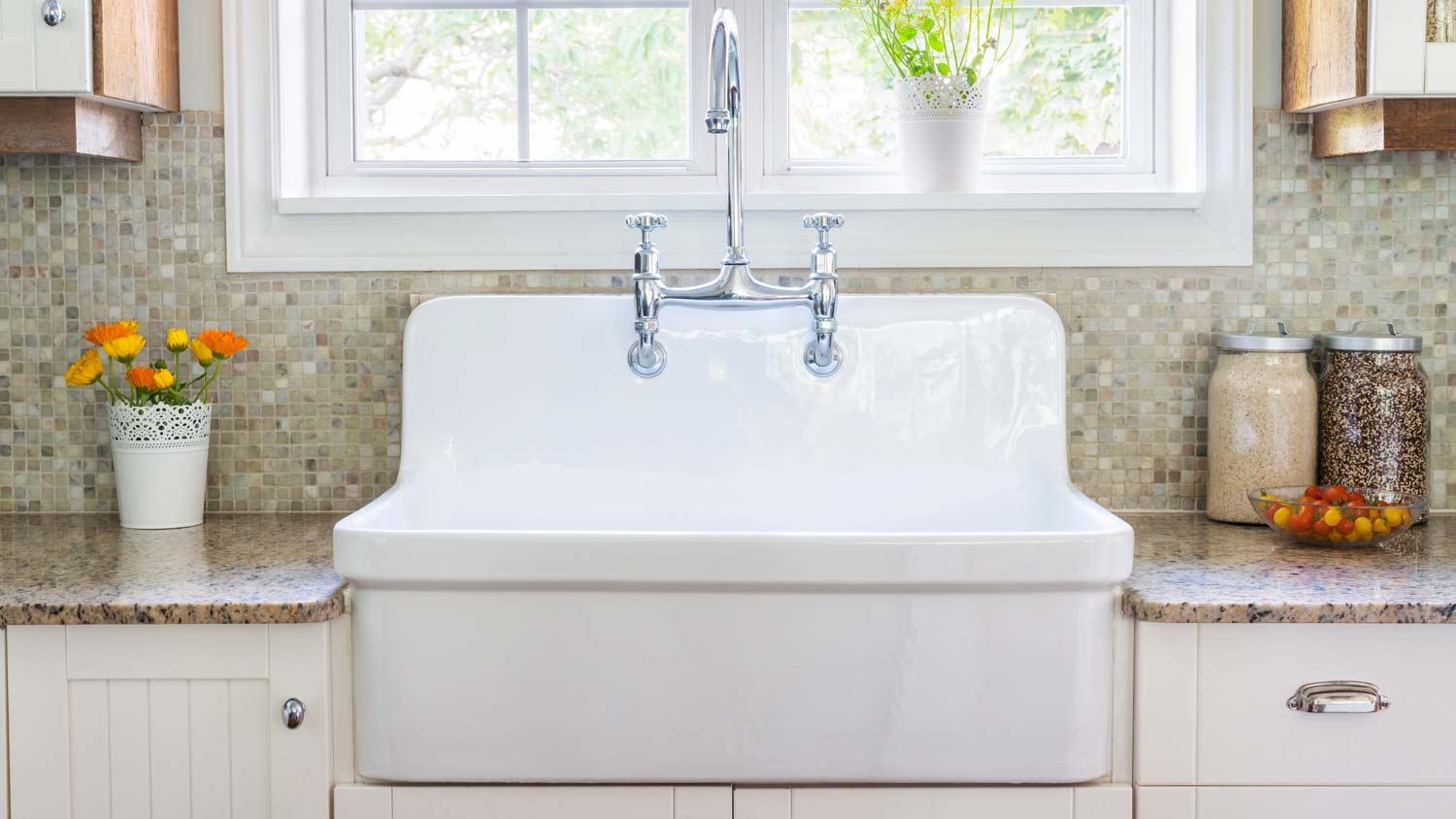
Discover the leading factors affecting your main water line replacement cost in Columbus, including length, material selection, and installation details.
In a material world, does the material of your kitchen sink measure up?


Between material, style, and size, the sink options are seemingly endless—but you can narrow it down to the right kitchen sink style and best kitchen sink material for you. Here are the pros and cons of the 10 best kitchen sink materials so you can choose the best option for your kitchen design and home cooking needs.

Around 70% of kitchen sinks are made of stainless steel, making it the most common material on the market. Stainless steel is inexpensive, tough to damage, and is a familiar material. Maintaining a stainless steel sink is not as difficult as one might think, but that isn’t to say that stainless has no downsides.
| Pros | Cons |
|---|---|
| Versatile | Can look spotty |
| Easy to clean | Scratches easily |
| Cost-effective | Noisy |
| Various styles | Lack of customization |
Best for: Heavily-used kitchens with lots of daily food prep, dishwashing, and hot cookware—and outdoor kitchens.

Cast iron is a heavier, more durable material choice—when compared to stainless—for kitchen sinks that come in various style options. These sinks cost between $300 and $900. While extremely tough to damage, cast iron is also unwieldy and expensive, making installation cumbersome and costly. Those who choose cast iron often do so when they want to upgrade from a stainless type of sink to a more customizable option, while still retaining the strength and metallic appearance of the former.
| Pros | Cons |
|---|---|
| More design choices | Very heavy |
| Extremely durable | Requires special install |
| Long lifespan | Easily rusts |
| Stylish | Overlay can chip |
Best for: Heavy-duty use in the kitchen; cooks who handle heavy pots, pans, and dishes; and high temperatures.

If you’re looking for a traditional farmhouse-style feel in your kitchen, copper may be the perfect option. Copper kitchen sinks start at $600 and cost up to $1,200, depending on the size and style. Copper has the unique benefit of being antimicrobial so in addition to the elegant statement such a sink makes, the sheen of copper also serves to keep your sink clean. However, they are expensive and require more maintenance than other types of sinks.
| Pros | Cons |
|---|---|
| Beautiful | Very expensive |
| Antimicrobial | Can dent easily |
| Timeless | Requires regular maintenance |
Best for: Adding warmth, character, and a touch of elegance to a big-budget kitchen.

Enamel sinks are cast iron sinks with an enamel overlay, so they have a different look than traditional cast iron sinks. These sinks cost between $300 and $600, but you may be able to find a used or vintage one for less. These sinks are strong and heavy and can be very durable underneath, but the enamel tends to chip easier than other materials. Cleaning your kitchen sink should be simple, but enamel requires non-abrasive materials and cleaners.
| Pros | Cons |
|---|---|
| Subtle design | Heavy |
| On the less expensive side | Prone to staining |
| Long lifespan | Chips easily |
| Classic looks | Requires special cleaning |
Best for: Homeowners on a budget looking for a classic and long-lasting sink.

A combination of white clay and glaze, fireclay sinks are formed using high heat and then overlaid with an enamel finish. Depending on the size, Fireclay sink installation costs between $600 and $1,400. These expensive sinks are customizable and, while they are on the upper end of the price range, are elegant and useful due to their depth. However, they are one of the heaviest options and require a professional installation from a sink installer near you.
| Pros | Cons |
|---|---|
| Does not scratch or stain easily | Very heavy |
| Customizable | Expensive |
| Easy to clean | Requires special mounting |
| Acid-resistant | Limited size options |
Best for: Avid cooks who often work with extremely high-temperature pots and pans.

Ceramic sinks are made from clay, but that doesn’t mean they are brittle. Sinks made from ceramics can be exceptionally beautiful and since they are handmade, can be designed and glazed any way you like. Ceramic is more affordable than porcelain and you can find sinks between $250 and $400. These porous sinks absorb stains easier than materials like stainless steel, and require regular maintenance.
| Pros | Cons |
|---|---|
| Infinitely customizable | Can be brittle |
| Unique | Variable quality |
| Not terribly expensive | Absorbs stains easily |
Best for: Kitchens with a unique aesthetic and homeowners who don’t mind a little extra maintenance.

Porcelain is a type of ceramic that’s fired at a higher temperature. It’s denser and more durable, but is quite a bit more expensive. You can expect to pay about 30% more per sink when compared to ceramic. For the price, you receive a smoother and more uniform surface. Depending on your design choice, this may or may not be a good fit. Porcelain tends to be heavy and more difficult to shape than ceramic due to its density.
| Pros | Cons |
|---|---|
| Elegant design | Heavy |
| More durable than ceramic | Expensive |
| Low water absorption | Limited design applications |
Best for: Houses in the country or those looking for a classic design.

A popular countertop material, solid surface is an affordable and easily customizable kitchen sink choice. Solid surface sinks start at around $150, which makes them the least expensive option when purchased new. Those looking for an inexpensive and extremely customizable option should look to solid surface sinks. The price for sizable savings? Solid surface sinks have a shorter lifespan and are more prone to damage than other sink materials.
| Pros | Cons |
|---|---|
| Various color choices | Not very durable |
| Customizable size and shape | Lacks wow factor |
| Lightweight | Can stain and scratch easily |
| Low price | Temperature sensitive |
Best for: Homeowners on a budget who don’t put a lot of wear-and-tear on their sinks.

Stone sinks are durable and bring pizzazz to a kitchen. However, they’re a costly option starting at around $1,000 per sink. The price only goes up from there the more rare the stone you purchase is. You can even commission specific quarries, but that’s truly unique. Stone sinks are of course very heavy, but each one is different, and once they are sealed are highly resistant to chemicals and humidity,
| Pros | Cons |
|---|---|
| Every sink is unique | Heavy |
| Customizable shaping | Requires sealing |
| Durable | Difficult to replace |
Best for: Homeowners looking for a long-lasting, statement-making investment piece.

Composite is another type of acrylic—not to be confused with solid surface—consisting of either granite or quartz dust and resin. These sinks can offer the look of stone without the weight or hefty price tag—composite kitchen sinks cost about $300 to $600. For the price, composite can be a great way to get a customizable sink that is still high-quality. Composite sinks offer some of the benefits of a stone sink without the weight—and wallet—penalties.
| Pros | Cons |
|---|---|
| Durable | Susceptible to heat damage |
| Relatively inexpensive | Only come matte |
| Doesn’t require sealing | Requires reinforcement |
Best for: Homeowners who love the look of stone but want something more affordable and easier to maintain.
Alison Kasch contributed to this piece.
From average costs to expert advice, get all the answers you need to get your job done.

Discover the leading factors affecting your main water line replacement cost in Columbus, including length, material selection, and installation details.

Learn about main water line repair costs in Columbus and what affects pricing to be prepared before you start getting estimates.

Learn how much plumbers cost in Columbus, Ohio. Discover pricing for faucet repairs, pipe work, and emergency services, plus how you can save money.

If your faucet hasn’t been working like it used to, you might need a replacement. Here’s how to replace a kitchen faucet like a plumbing pro.

Learn how to remove a bathtub drain for cleaning or replacing, whether you’ve got a simple toe-touch stopper or a more complicated trip-level model.

There are a few plumbing terms that everyone needs to know. Using this informative guide, you’ll learn plumbing terms like flapper and shut-off valve to help you tackle both emergencies and everyday annoyances.